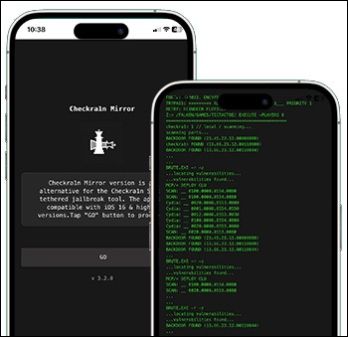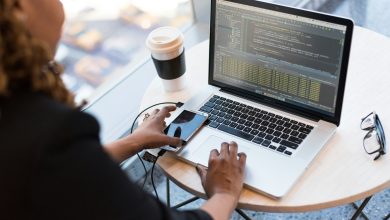
The desire to customize, tweak, and gain complete control over one’s device has always driven the jailbreaking community. With the release of iOS 17, the cat-and-mouse game between Apple’s security updates and dedicated developers continues, making the process complex, yet still achievable for certain devices.
Jailbreaking an iPhone running iOS 17 involves leveraging a vulnerability to gain root access to the operating system, allowing the installation of third-party package managers like Cydia or Sileo. This process opens the door to a world of customization, themes, and tweaks unavailable on the official App Store.
To jailbreak iOS 17, let take a comprehensive look at the methods, categorized by whether a computer is required, along with an essential note on unlocking iCloud-locked devices.

Jailbreaking iOS 17 with a Computer
The most reliable path to jailbreaking on modern iOS versions often involves a computer, particularly when dealing with devices featuring older chipsets susceptible to a permanent hardware vulnerability known as checkm8.
Palera1n (Based on checkm8)
The checkm8 exploit is a bootrom flaw that cannot be patched by software updates, making it a foundation for highly stable jailbreaks like palera1n.
Supported Devices: This method is primarily limited to older devices using the A11 Bionic chip and older (iPhone X, iPhone 8/8 Plus, and certain older iPads). Newer devices (iPhone XS and above) are not vulnerable to this hardware exploit, which is why a computer-based, “semi-tethered” solution is necessary.
The Process:
- Preparation: You must use a computer running macOS or Linux (Windows typically requires extra steps like a live USB drive).
- Download: Download the latest version of the palera1n tool.
- DFU Mode: Connect your supported iPhone or iPad to the computer and manually put it into DFU (Device Firmware Update) mode. The palera1n tool will provide on-screen instructions for this crucial step.
- Exploit Execution: The palera1n tool uses the checkm8 exploit to patch the iOS kernel while it is running and install the necessary jailbreak components.
- Semi-Tethered Status: This is a semi-tethered jailbreak. If your device fully powers off or restarts, it will boot back into stock (unjailbroken) iOS, and you will need to re-run the palera1n tool on your computer to re-enable the jailbreak.
Jailbreaking iOS 17 Without a Computer
Jailbreaking without a computer typically relies on a vulnerability within the iOS operating system itself (a software exploit), often distributed via a sideloading application like TrollStore or a direct web-based app installer.
Status on iOS 17: True, stable, and widely accessible untethered (no reboot required) or even semi-untethered (re-jailbreak from the phone after a reboot) jailbreaks for the latest versions of iOS 17 are extremely rare and often limited to a very narrow range of initial iOS 17 releases.
Current Landscape (Bootstraps): The recent efforts on newer iPhones (A12 chip and later) on specific iOS 17 versions have focused on Bootstraps like RootHide. These are not full, traditional jailbreaks but allow for a “jailbreak environment” to install some tweaks and customizations without needing a PC. These methods:
- Are highly dependent on the exact iOS 17 point version (e.g., 17.0, but not 17.5).
- Typically utilize an on-device app to activate the patched environment.
- Are constantly evolving and highly technical. For most users, this method is too volatile and version-dependent to be reliable.
Bonus Tip: How to Jailbreak iCloud Locked iPhone/iPad
Jailbreaking your iPhone or iPad unlocks a world of deep customization and control—but what if your device is stuck behind an Activation Lock, or completely inaccessible? You cannot use a standard jailbreak tool like palera1n to bypass an iCloud Activation Lock. A dedicated iCloud activation unlocker tool like iMobie AnyUnlock is required.
AnyUnlock offers a feature to bypass the iCloud Activation Lock screen. This process typically requires a jailbreak to be performed on the device as a prerequisite for the tool to gain the necessary access to circumvent the lock.
Step-by-Step Guide:
- Download and Install AnyUnlock. Visit the official AnyUnlock page and download the latest version for your OS. Install and launch the program. Select the Bypass iCloud Activation Lock mode from the main interface.
- Connect Your iPhone. Use a USB cable to connect your locked iPhone to the computer. AnyUnlock should detect it automatically.
- Jailbreak the Device. AnyUnlock will guide you to jailbreak temporarily.
- Start the Bypass Process. Once jailbroken, click Start Bypass or similar. AnyUnlock processes automatically (5–15 minutes).
- Complete and Set Up. When finished, the iPhone restarts to the “Hello” setup screen.
Conclusion
In summary, jailbreaking iOS 17 is feasible on older checkm8 devices via palera1n, but remains limited and unstable on newer iPhones. For iCloud-locked devices, AnyUnlock offers a reliable bypass with temporary jailbreak—though iCloud services stay disabled. Proceed with caution, back up data, and use only trusted tools.





